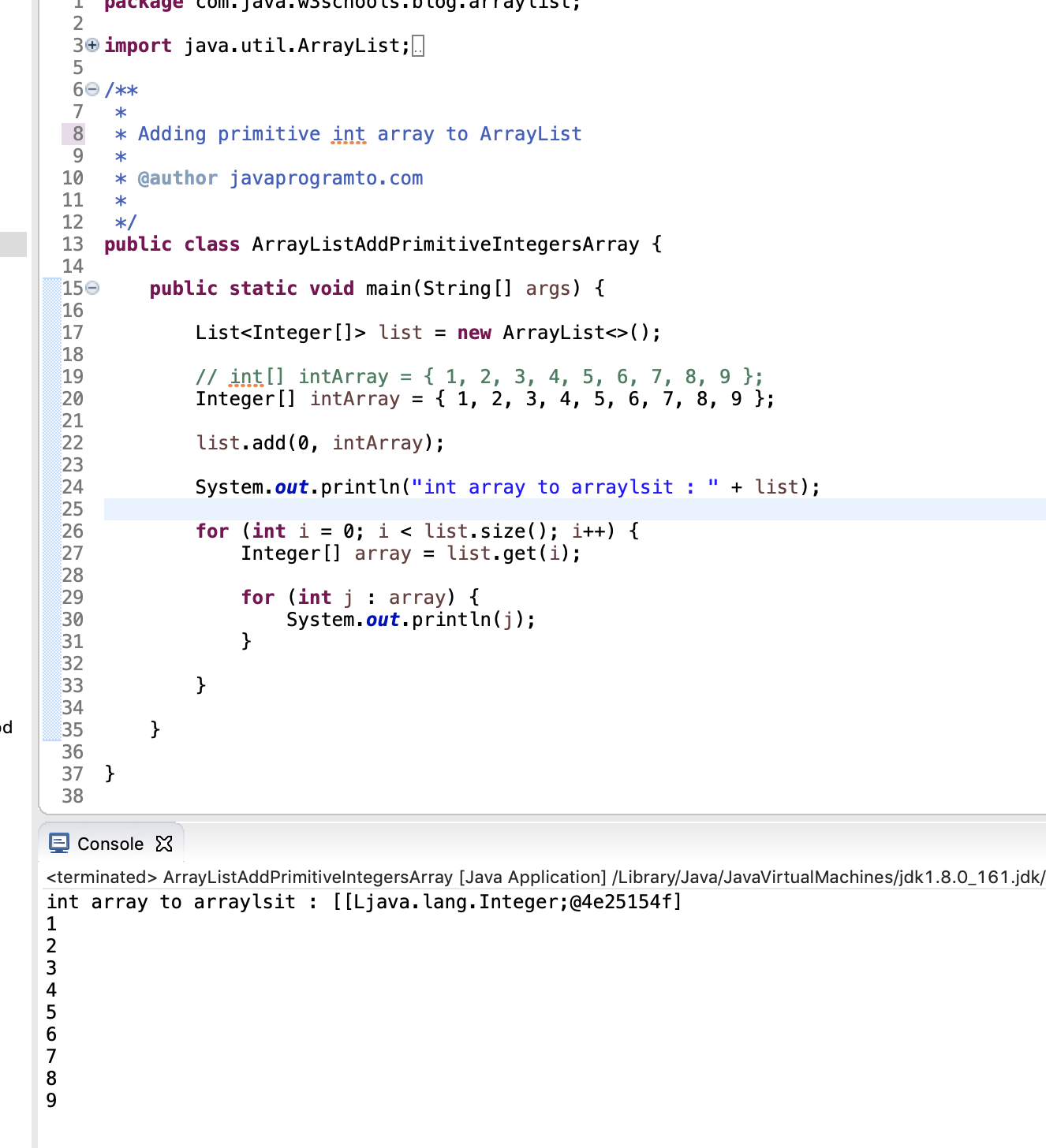

The Iterators returned by ArrayList's iterator and listIterator List list = Collections.synchronizedList(new ArrayList(.)) To prevent accidental unsynchronized access to the ArrayList: If no such objectĮxists, the ArrayList should be "wrapped" using theĬollections.synchronizedList method. Object that naturally encapsulates the ArrayList. Modification.) This is typically accomplished by synchronizing on some That adds or deletes one or more elements, or explicitly resizes theīacking array merely setting the value of an element is not a structural (A structural modification is any operation The threads modifies the ArrayList structurally, it must be Multiple threads access an ArrayList concurrently, and at least one of Note that this implementation is not synchronized. This may reduce the amount of incremental reallocation. An application can increase the capacity of an ArrayList beforeĪdding a large number of components using the ensureCapacity Specified beyond the fact that adding an element to an ArrayList hasĬonstant amortized cost, that is, adding n elements requires O(n) As elements are added an ArrayList, itsĬapacity grows automatically.

Size of the array used to store the elements in the List. TheĬonstant factor is low compared to that for LinkedList.Įach ArrayList has a capacity. The ArrayList to exceed its capacity, in which case it runs in linear time.Īll of the other operations run in linear time (roughly speaking). The add() operation runs in constant time unless it causes The size, isEmpty, get, set, iterator, and listIterator operations run inĬonstant time. (ArrayList is roughly equivalent to Vector, except that it is To manipulate the size of the array that is used internally to store the InĪddition to implementing the List interface, ArrayList provides methods Optional List operations, and permits all elements, including null.

Resizable-array implementation of the List interface. You can iterate over an ArrayList in two ways.Public class ArrayList extends AbstractList implements List, Cloneable, Serializable

Println("The total number of particles is: " + total) The size() method returns the current number of items in the list Particles can be pulled out of an ArrayList with get() Objects can be added to an ArrayList with add() our intention to fill this ArrayList with Particle objects Declaring the ArrayList, note the use of the syntax "" to indicate They won't compile because they assume the existence of a Particle class.
#JAVA ARRAYLIST HOW TO#
(See the above example for context.)įor a list of the numerous ArrayList features, please read the Java reference description.Ĭopy // These are code fragments that show how to use an ArrayList. The get() method returns the element at the specified position in the list. An element is added to an ArrayList with the add() method and is deleted with the remove() method. For example, the length of the ArrayList is returned by its size() method, which is an integer value for the total number of elements in the list. It has many methods used to control and search its contents. Note that for resizable lists of integers, floats, and Strings, you can use the Processing classes IntList, FloatList, and StringList.Īn ArrayList is a resizable-array implementation of the Java List interface. This can be very convenient, but it's slower than making an array of objects when using many elements. This is similar to making an array of objects, but with an ArrayList, items can be easily added and removed from the ArrayList and it is resized dynamically. An ArrayList stores a variable number of objects.


 0 kommentar(er)
0 kommentar(er)
